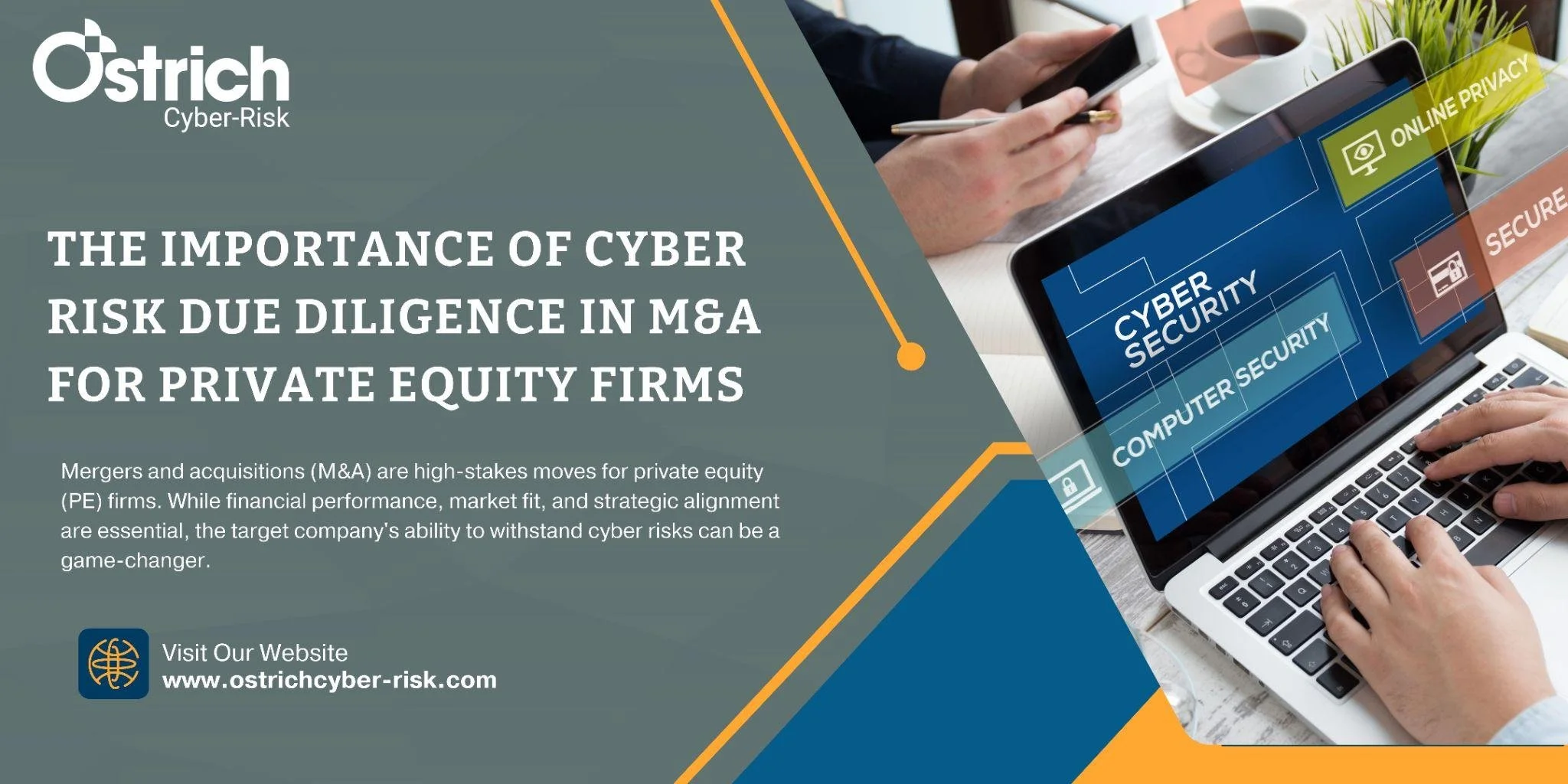The Importance of Cyber Risk Due Diligence in M&A for Private Equity Firms
Mergers and acquisitions (M&A) are high-stakes moves for private equity (PE) firms. While financial performance, market fit, and strategic alignment are essential, the target company's ability to withstand cyber risks can be a game-changer. Today, cyber risk has become a key factor that could make or break a deal, making thorough cyber due diligence crucial for a successful M&A.
Why Cyber Risk Matters in M&A?
For private equity firms, securing a favorable acquisition goes beyond financial forecasts; it hinges on how well the target company manages its cyber risks. Without a deep dive into cyber assessments, PE firms risk inheriting unseen liabilities that could diminish deal value, spike integration costs, and shake investor confidence.
Let's face it - cyber incidents aren't just a hypothetical. Data breaches are costing companies an average of $4.45 million in 2024. That's why identifying vulnerabilities during due diligence is no longer optional - it's critical. And let's not forget about compliance risks. In industries governed by regulations like GDPR, CCPA, or HIPAA, poor cybersecurity practices can lead to hefty fines that chip away at the acquisition's value.
But beyond the financial and regulatory costs, a cyber breach after the deal is done can severely damage both the target's reputation and the PE firm's credibility. Investors expect strong cybersecurity measures, and one breach could undermine trust, leading to future investment challenges. This makes cybersecurity a top priority in M&A strategy, protecting the investment from all angles.
Key Areas of Cyber Risk Due Diligence
In M&A, managing cyber risk isn't just about protecting assets - it's about setting the deal up for success. Understanding and addressing these risks effectively can streamline integration, safeguard your reputation, and reduce financial exposure. Here's how a targeted approach to cyber risk can make a world of difference:
1. Identify and Prioritize Key Risks
Knowing where threats lie isn't enough; you need to focus on the risks that could do the most damage to the business and deal value. By applying fair risk quant methodology, firms can better prioritize risks based on their potential impact. This approach combines qualitative assessments, industry insights, and cyber risk quantification to highlight the most critical vulnerabilities. This helps Chief Information Security Officers (CISOs) communicate priority risks more clearly to non-technical stakeholders, ensuring informed decisions are made.
2. Focus on the Most Effective Controls
Once risks are identified, it's crucial to pinpoint the security controls that will make the biggest difference. In the combined organization, not all security measures will carry equal weight in reducing risk. With the right focus, PE firms can avoid overspending on unnecessary tools while zeroing in on the ones that offer the strongest protection. Cyber risk management software plays a huge role here, helping security teams implement cost-effective controls while demonstrating a proactive approach that resonates with both technical teams and executives.
3. Make Data-Driven, High-Impact Decisions
The best decisions aren't made in the dark - they're based on data. By leveraging data-backed insights into cyber risks, firms can determine where to allocate resources most effectively. Instead of trying to tackle every risk at once, this method allows you to focus on the areas that matter most, ensuring smoother transitions after the acquisition and aligning security measures with overarching business goals.
Combining Cyber Risk Assessments & Quantification
Cyber risk assessments traditionally give you a qualitative view of a target's cybersecurity posture, but adding Cyber Risk Quantification (CRQ) takes things to the next level. By translating risks into financial terms, CRQ provides private equity firms with a clearer understanding of potential financial impacts. This approach uses tools like FAIR™ to help firms pinpoint vulnerabilities that could financially affect the deal, making it easier to make informed decisions that protect deal value.
The true power lies in combining CRQ with qualitative insights to create a targeted remediation strategy. This ensures resources are directed where they'll have the greatest impact while supporting post-acquisition integration by aligning security measures with business objectives. It's a comprehensive approach that strengthens both the value of the acquisition and the overall deal.
If your private equity firm is looking to integrate cyber risk assessments and Cyber Risk Quantification (CRQ) into your M&A strategy, let's connect. Our team of experts can help you gain a complete view of potential risks and turn them into manageable factors, allowing you to make smarter acquisitions that drive sustainable growth.


